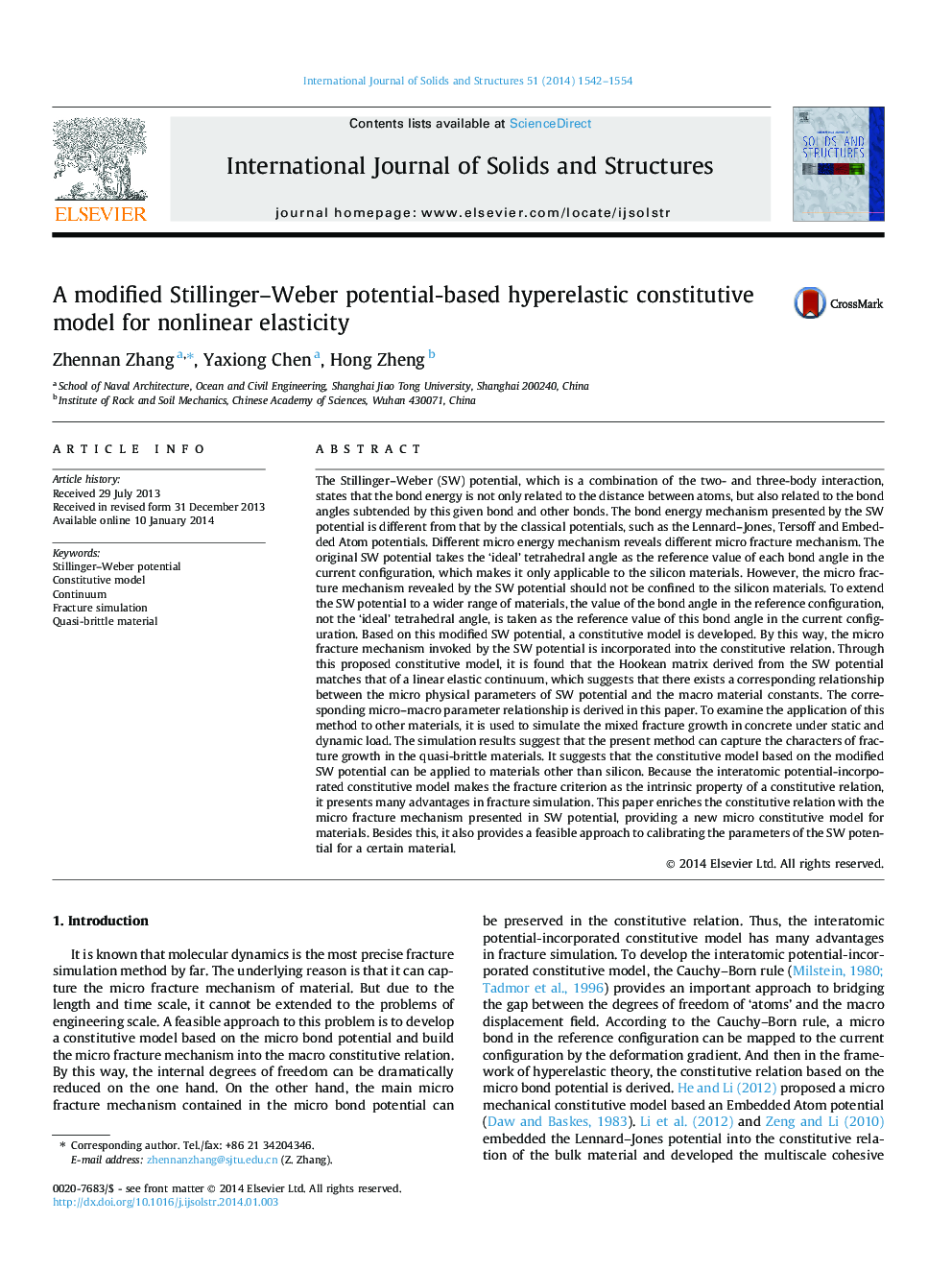| Article ID | Journal | Published Year | Pages | File Type |
|---|---|---|---|---|
| 277611 | International Journal of Solids and Structures | 2014 | 13 Pages |
•A macro constitutive model is developed based on a modified Stillinger–Weber (SW) potential.•The micro fracture mechanism by SW potential is built into the constitutive relation.•The relationship between the parameters of SW potential and material constants is derived.•The proposed constitutive model can be used to simulate fracture growth in material other than silicon.•A parameter calibration method for SW potential is provided.
The Stillinger–Weber (SW) potential, which is a combination of the two- and three-body interaction, states that the bond energy is not only related to the distance between atoms, but also related to the bond angles subtended by this given bond and other bonds. The bond energy mechanism presented by the SW potential is different from that by the classical potentials, such as the Lennard–Jones, Tersoff and Embedded Atom potentials. Different micro energy mechanism reveals different micro fracture mechanism. The original SW potential takes the ‘ideal’ tetrahedral angle as the reference value of each bond angle in the current configuration, which makes it only applicable to the silicon materials. However, the micro fracture mechanism revealed by the SW potential should not be confined to the silicon materials. To extend the SW potential to a wider range of materials, the value of the bond angle in the reference configuration, not the ‘ideal’ tetrahedral angle, is taken as the reference value of this bond angle in the current configuration. Based on this modified SW potential, a constitutive model is developed. By this way, the micro fracture mechanism invoked by the SW potential is incorporated into the constitutive relation. Through this proposed constitutive model, it is found that the Hookean matrix derived from the SW potential matches that of a linear elastic continuum, which suggests that there exists a corresponding relationship between the micro physical parameters of SW potential and the macro material constants. The corresponding micro–macro parameter relationship is derived in this paper. To examine the application of this method to other materials, it is used to simulate the mixed fracture growth in concrete under static and dynamic load. The simulation results suggest that the present method can capture the characters of fracture growth in the quasi-brittle materials. It suggests that the constitutive model based on the modified SW potential can be applied to materials other than silicon. Because the interatomic potential-incorporated constitutive model makes the fracture criterion as the intrinsic property of a constitutive relation, it presents many advantages in fracture simulation. This paper enriches the constitutive relation with the micro fracture mechanism presented in SW potential, providing a new micro constitutive model for materials. Besides this, it also provides a feasible approach to calibrating the parameters of the SW potential for a certain material.
